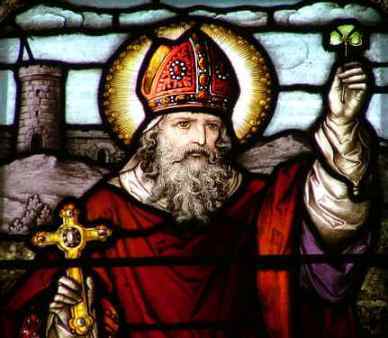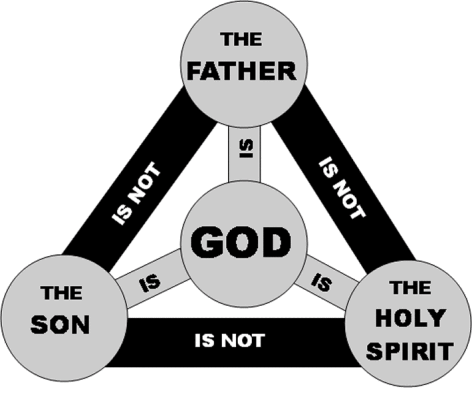3 Ways NOT to Share the Trinity
The mystery of the Most Holy Trinity is the “central mystery of [our] faith” (CCC 234). It is therefore the most fundamental. If we get it wrong, then everything else get’s obscured or perverted.
Since the mystery of the Trinity is “the mystery of God in himself” (CCC 234), humility is required here.
A mystery, it has been said, is not something that is unknowable, but infinitely knowable. That may not be true of some things we call mysteries, but it is of God.
But just because we cannot fully understand something doesn’t mean that we cannot understand errors about that thing.
For example, Jesus Christ is the most mysterious person who ever lived, but correcting someone who says that Jesus was a woman, or that Jesus wasn’t a Jew, does not reveal a lack of humility.
Since the Trinity is the most fundamental and essential teaching in the “hierarchy of the truths of faith,” we ought to stamp out errors wherever we find them.
With that said. Here are three ways not to share the Trinity, and three way to share it.
1.The Trinity is like how a man can be a Son, Father, and Uncle
Nope! This analogy commits the heresy of modalism. Modalism is the false belief that God is one person who has revealed himself in three forms or modes.
Though a man may be a son, father and uncle, he is not three persons as God is, but one person who has three titles. Another popular but false analogy is the following: the Trinity is like how water can be ice, liquid and steam. This again commits the heresy of modalism. God does not go through three different states. The Persons of the Holy Trinity can co-exist; the different forms water may take cannot. Water cannot be ice, liquid and steam at the same time. It may be between two stages such as when ice is melting, but this isn’t coexisting, it’s transforming.
2. The Trinity is like a three leaf clover
This commits (or could at least lead one to believe) the heresy of Tritheism. Tritheism divides or distinguishes the nature of God, and in so doing “creates” three gods.
A three leaf clover has three separate leafs. The middle leaf, for example, does not share in the same nature as the other two leafs, but only has a similar nature. In the Trinity, each member shares in the exact same nature. The key here is understanding that we don’t believe in three persons who share in a species called “God,” but three persons who share in an identical, united nature. ”The Father is that which the Son is, the Son that which the Father is, the Father and the Son that which the Holy Spirit is, i.e. by nature one God.”[1]
3. The Trinity is like an egg: yellow yoke, white yoke, and shell
This commits the same error as number 2. While the egg is one, it has three substances (yellow yoke, white yoke, and shell) which make it what it is. Each of these things are distinct. The shell is completely different in nature from the yellow yoke.
3 ways to explain the Holy Trinity
Though it’s tempting to use an analogy to help our children better understand who God is, ultimately, they all fail. I don’t mean that they fail to fully communicate the Trinity (all analogies fail to fully communicate what they’re trying to convey), I mean that they fail to capture the correct definition of the Trinity, and it’s better that our children not fully understand who God is than to have a false understanding of him.
For this reason I don’t use analogies for the Trinity. The closest I get to “dumbing it down” for my kids is by 1). A simple conversation about being and person. 2.) A simple diagram, and 3). The Athanasian Creed.
1. The conversation
Me: Liam, what is a person?
Liam: I dunno.
Me: A person is someone who can potentially say “I.” Is a statue a person?
Liam: No.
Me: So there are some beings, like statues, which are not persons, right?
Liam: Right.
Me: What about you, are you a person?
Liam: yes.
Me: Okay. So a statue is a being with 0 persons. You are a being who is 1 person. God is a being who is three persons. Make sense?
Liam: Not really.
Me: Good.
2. Diagram
3. Athanasian Creed
Here it is in part, and it’s BEAUTIFUL!:
We worship one God in Trinity and Trinity in Unity. Neither confounding the Persons, nor dividing the Substance.
For there is one Person of the Father, another of the Son, and another of the Holy Ghost.
But the Godhead of the Father, of the Son and of the Holy Ghost is all One, the Glory Equal, the Majesty Co-Eternal. Such as the Father is, such is the Son, and such is the Holy Ghost.
The Father Uncreate, theSon Uncreate, and the Holy Ghost Uncreate.
The Father Incomprehensible, the Son Incomprehensible, and the Holy Ghost Incomprehensible.
The Father Eternal, the Son Eternal, and the Holy Ghost Eternal and yet they are not Three Eternals but One Eternal.
As also there are not Three Uncreated, nor Three Incomprehensibles, but One Uncreated, and One Uncomprehensible. So likewise the Father is Almighty, the Son Almighty, and the Holy Ghost Almighty. And yet they are not Three Almighties but One Almighty.
So the Father is God, the Son is God, and the Holy Ghost is God. And yet they are not Three Gods, but One God.
So likewise the Father is Lord, the Son Lord, and the Holy Ghost Lord. And yet not Three Lords but One Lord.
For, like as we are compelled by the Christian verity to acknowledge every Person by Himself to be God and Lord, so are we forbidden by the Catholic Religion to say, there be Three Gods or Three Lords.
The Father is made of none, neither created, nor begotten. The Son is of the Father alone; not made, norcreated, but begotten. The Holy Ghost is of the Father, and of the Son neither made, nor created, nor begotten, but proceeding.
So there is One Father, not Three Fathers; one Son, not Three Sons; One Holy Ghost, not Three HolyGhosts.
And in this Trinity none is afore or after Other, None is greater or less than Another, but the whole Three Persons are Co-eternal together, and Co-equal. So that in all things, as is aforesaid, the Unity inTrinity, and the Trinity in Unity, is to be worshipped.
He therefore that will be saved, must thus think of theTrinity.
[1] Council of Toledo XI (675): DS 530:26.
Filed under: Apologetics








Matt Fradd's Blog
- Matt Fradd's profile
- 168 followers






